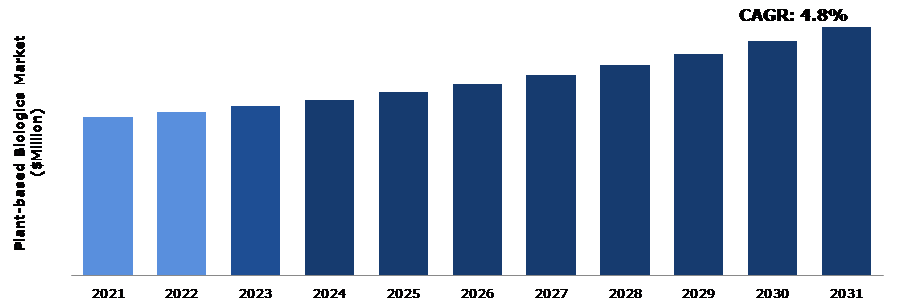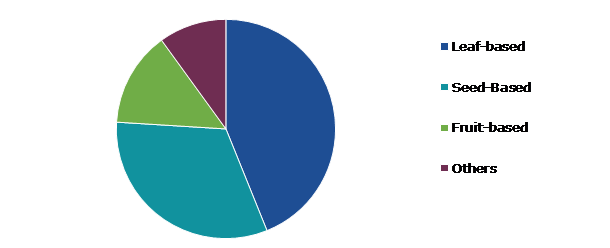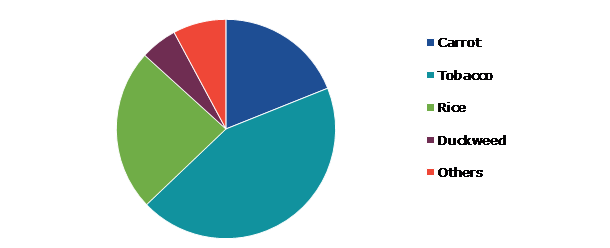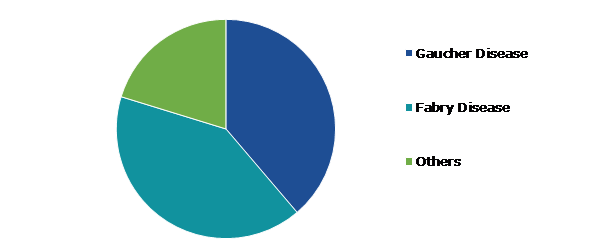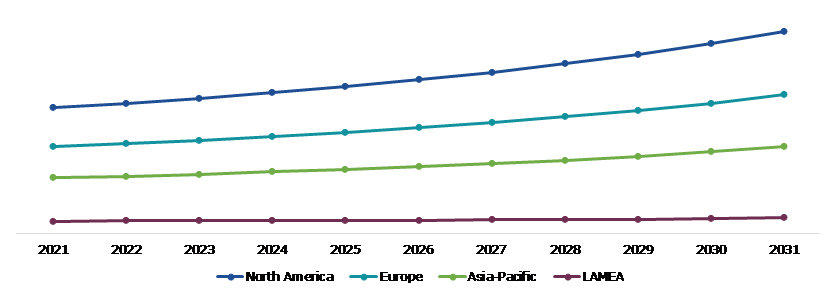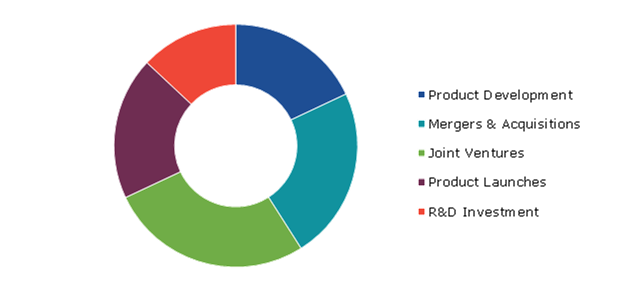Plant-based Biologics Market Report
RA00150
Plant-based Biologics Market by Product Type (Leaf-based, Seed-based, Fruit-based, and Others), Source (Carrot, Tobacco, Rice, Duckweed, and Others), Target Disease (Gaucher Disease, Fabry Disease, and Others) and Regional Analysis (North America, Europe, Asia-Pacific, and LAMEA): Global Opportunity Analysis and Industry Forecast, 2022–2031.
Update Available On-Demand
Global Plant-based Biologics Market Analysis
The Global Plant-Based Biologics Market Size was $116.1 million in 2021 and is predicted to grow with a CAGR of 4.8%, by generating a revenue of $182.9 million by 2031.
Global Plant-based Biologics Market Synopsis
Recent developments in glycoengineering, downstream processing, and plant expression vector creation have made plants a superior alternative for the manufacture of biologics. Proper eukaryotic protein modification, low cost, high scalability, and increased safety are advantages provided by plants. In addition, plants can manufacture biologics quickly, enabling more effective pandemic responses. Certain glycoforms may be present in plant-based biologics, which may enhance their efficacy or safety. A promising advancement in biotechnology is the utilization of plants to produce biologics, which presents a viable substitute for conventional production techniques.
Biologics derived from plants could encounter issues with product quality and regulatory compliance. Comparing plant-based biologic production systems to other biologic production methods, the regulatory approval process for these products may be more difficult and time-consuming. This is partly because of concerns about possible allergenicity and product quality variation, which can be influenced by elements such as plant growing circumstances and post-harvest processing.
Plant-based biologics have emerged as a promising alternative for making vaccines due to their capacity for low-cost and scalable production. This is important in addressing the demand for vaccines during pandemics. Many vaccines for inifluenza, HPV, and COVID-19 have been produced using plants. Another benefit of using plant-based vaccinations is their speed. Since plants can grow quickly and vaccines may be made in a matter of weeks, it is possible to respond quickly to newly emerging infectious diseases. This factor is anticipated to offer ample growth opportunities in the upcoming years.
According to regional analysis, the North America plant-based biologics market accounted for the highest market share in 2021 owing to the presence of several well-known players in the market such as Medicago, Kentucky BioProcessing, Ventria Bioscience, which have contributed to the development of the market in the region
Plant-based Biologics Market Overview
Plant-based biologics are medical products that are produced by utilizing bioengineered plants to create complex molecules like proteins, antibodies, and vaccines. These biologics are produced more sustainably and economically than conventional animal cell-based biologics. The use of plant-based biologics may have substantial effects on the pharmaceutical industry by lowering the costs of medicine development and production and addressing ethical concerns about the use of animals in medical research.
COVID-19 Impact on the Plant-based Biologics Market
The COVID-19 pandemic has had a moderate impact on the plant-based biologics market. The pandemic increased interest in plant-based biologics by highlighting the need for ethical and sustainable alternatives to conventional animal-based biologics. However, the pandemic also impacted the development and distribution of plant-based biologics by disrupting the worldwide supply chain, including transportation and the purchase of raw materials. The pandemic has also compelled numerous pharmaceutical firms to redirect their attention and resources toward COVID-19 research and development, which could have impeded the advancement of plant-based biologics. Concerns about developing biologics on the basis of plants to treat other diseases have also increased as a result of the pandemic. The importance of developing new drugs to treat infectious diseases has been highlighted by the pandemic, and the plant-based biologics sector is well-positioned to address this demand.
Increase in Demand for Sustainable and Ethical Alternatives to Traditional Animal-based Biologics to Drive the Market Growth
Complex molecules including proteins, antibodies, and vaccines can be produced more sustainably and affordably using plant-based biologics. More ethical and ecological solutions are required to deal with these issues due to the expansion of global population and rise in demand for healthcare supplies. Furthermore, improvements in plant molecular biology have enabled the production of superior plant-based biologics that are equivalent to their animal-based counterparts in terms of efficacy and safety. In the upcoming years, these elements are anticipated to fuel market growth along with the advantages of plant-based biologics.
Difficulty in Achieving Consistent Yields and Quality is Anticipated to Restrain Plant-based Biologics Market Growth
The variety in plant growth circumstances and the complexity of protein expression make it difficult to produce consistent yields and quality, which is major limitation of plant-based biologics. This may lead to batch-to-batch variance and decreased production process efficiency. Moreover, the regulatory approval and widespread acceptability of plant-based biologics may be difficult to achieve because stakeholders must be fully informed about the safety and effectiveness of the products. These difficulties can be overcome due to the increased developments in plant molecular biology such as gene editing and synthetic biology. Furthermore, the development and commercialization of plant-based biologics may be facilitated by fostering partnerships and collaborations between academic institutions, pharmaceutical firms, and other stakeholders.
Growth in Biopharmaceutical Sector is Anticipated to Offer Lucrative Opportunities
Companies operating in biopharmaceutical industry have ample opportunities in plant-based biologics. Plant-based biologics are a new class of medicinal goods using genetically modified plants to express human proteins, antibodies, and other molecules with therapeutic promise. Plant-based biologics provide several benefits over conventional biologics, including lower production costs, a lower risk of contamination, and a more ecologically friendly manufacturing process. The market for plant-based biologics is anticipated to expand rapidly over the next few years because of the rise in demand for biologics. Plant-based biologics have potential outside of the pharmaceutical industry as well, including in the food, cosmetics, and agricultural industries.
Global Plant-based Biologics Market, by Product Type
On the basis of product type, the market is further divided into leaf-based, seed-Based, fruit-based, and others. Among this leaf-based sub-segment accounted for the largest market share in 2021.
Global Plant-based Biologics Market Share, by Product Type, 2021
Source: Research Dive Analysis
The leaf-based sub-segment accounted for the largest market share in 2021. This sub-segment consists of biologics produced from plant leaves, including tobacco, alfalfa, and lettuce. The considerable market share can be attributed to the significant use of tobacco plants in the production of biologics made from plants. The production of biologics frequently uses tobacco plants because of their high biomass yield and quick growth rate. Further advantages of tobacco plants include their ability to produce significant amounts of protein and their ease of genetic modification. Tobacco plants have consequently emerged as a preferred substitute for the production of plant-based biologics.
Global plant-based Biologics Market, by Source
On the basis of source, the global plant-based biologics market has been divided into carrot, tobacco, rice, duckweed, and others. Among these, the tobacco sub-segment accounted for the largest market share in 2021.
Global Plant-based Biologics Market Size, by Source, 2021
Source: Research Dive Analysis
The tobacco sub-segment accounted for the largest market share in 2021. The tobacco plant has been the preferred option as a host plant for generating recombinant antibodies. Tobacco continues to be the most widely used plant for the manufacturing of pharmaceuticals. It is simple to infect tobacco plants with foreign genes which encode for the protein as they produce foreign products far more quickly than bioreactors do. This may dramatically lower production costs. Moreover, tobacco plants are a cost-effective option for biologic synthesis because of their high propensity to take foreign proteins and low care needs.
Global plant-based Biologics Market, by Target Disease
On the basis of target disease, the global plant-based biologics market has been divided into gaucher disease, fabry disease, and others. Among these, the fabry disease sub-segment accounted for the largest market share in 2021.
Global Plant-based Biologics Market, by Target Disease, 2021
Source: Research Dive Analysis
The fabry disease sub-segment accounted for the largest market share in 2021. Fabry disease is a rare genetic disease that impairs lipid metabolism, resulting in a buildup of a kind of fat termed globotriaosylceramide (GL-3) in numerous organs of the body. Many symptoms, including pain, exhaustion, and organ damage, can be brought on by the illness. Plant-based biologics are being researched as a potential therapy for Fabry disease. A plant-based enzyme replacement treatment (ERT) made from genetically engineered tobacco plants is one example. This plant-based ERT contains alpha-galactosidase A, an enzyme that is lacking in persons with Fabry disease.
Plant-based Biologics Market, Regional Insights
The plant-based biologics market was studied across North America, Europe, Asia-Pacific, and LAMEA.
Plant-based Biologics Market Size & Forecast, by Region, 2021-2031 ($million)
Source: Research Dive Analysis
North America Dominated the Plant-based Biologics Market in 2021
The North America region dominated the global plant-based biologics market in 2021. North America offers a sizable market opportunity for plant-based biologics due to high demand for biopharmaceuticals and growth in consumer interest in eco-friendly and plant-based products of this region. The U.S. now boasts the largest biologics market in the world, while there is a rapid growth of the biotech industry of Canada. Biologics made from plants are already receiving investment from significant pharmaceutical companies in North America. In addition, the region attracts businesses wanting to develop and market plant-based biologics due to its supportive regulatory environment and strong research infrastructure. The market for plant-based biologics in North America is anticipated to increase significantly over the next few years as the need for more reasonably priced and environmentally friendly biologics continues to rise.
Global Plant-based Biologics Market Competitive Scenario
Joint ventures, investment, merger & acquisition, product development, and technological development are the common strategies followed by major plant-based biologics market players. For instance, in February 2023, Chiesi Global Rare Diseases, a business unit of the Chiesi Group established to deliver innovative therapies and solutions for people affected by rare diseases, and Protalix BioTherapeutics, Inc., a biopharmaceutical company, announced that the European Medicines Agency’s (EMA) Committee for Medicinal Products for Human Use (CHMP) had adopted a positive opinion, recommending marketing authorization for PRX-102 (pegunigalsidase alfa), the first and only pegylated enzyme for the treatment of adult patients with Fabry disease.
Source: Research Dive Analysis
Some of the leading players in the plant-based biologics market are Leaf Expression Systems, Zea Biosciences, Planet Biotechnology Inc., InVitria, PlantForm Corporation, IBIO, Inc., Mapp Biopharmaceutical, Inc., Pfizer Inc., Ventria Bioscience Inc., Medicago Inc., and Eleva GmbH.
| Aspect | Particulars |
| Historical Market Estimations | 2020 |
| Base Year for Market Estimation | 2021 |
| Forecast Timeline for Market Projection | 2022-2031 |
| Region | North America, Europe, Asia-Pacific, and LAMEA |
| Segmentation by Product Type
|
|
| Segmentation by Source |
|
| Segmentation by Target Disease |
|
| Key Companies Profiled |
|
Q1. What is the size of the plant-based biologics market?
A. The global plant-based biologics market size was over $116.1 million in 2021 ¬¬and is anticipated to reach $182.9 million by 2031.
Q2. Which are the leading companies in the Plant-based Biologics market?
A. Eleva GmbH, Planet Biotechnology Inc., and Leaf Expression Systems are some of the key players in the global plant-based biologics market.
Q3. Which region possesses greater investment opportunities in the coming future?
A. Asia-Pacific possesses great investment opportunities for investors to witness the most promising market growth in the coming years.
Q4. What is the growth rate of the Asia-Pacific market?
A. The Asia-Pacific plant-based biologics market is anticipated to grow at 4.7% CAGR during the forecast period.
Q5. What are the strategies opted by the leading players in this market?
A. Product innovations, business expansions, and technological advancements are the key strategies opted by the operating companies in this market.
Q6. Which companies are investing more on R&D practices?
A. Pfizer Inc., Mapp Biopharmaceutical, Inc., and Zea Biosciences are among the companies that are known for investing heavily in research and development (R&D) activities to develop new products and technologies.
1.Research Methodology
1.1.Desk Research
1.2.Real time insights and validation
1.3.Forecast model
1.4.Assumptions and forecast parameters
1.5.Market size estimation
1.5.1.Top-down approach
1.5.2.Bottom-up approach
2.Report Scope
2.1.Market definition
2.2.Key objectives of the study
2.3.Report overview
2.4.Market segmentation
2.5.Overview of the impact of COVID-19 on Global plant-based biologics market
3.Executive Summary
4.Market Overview
4.1.Introduction
4.2.Growth impact forces
4.2.1.Drivers
4.2.2.Restraints
4.2.3.Opportunities
4.3.Market value chain analysis
4.3.1.List of raw material suppliers
4.3.2.List of manufacturers
4.3.3.List of distributors
4.4.Innovation & sustainability matrices
4.4.1.Technology matrix
4.4.2.Regulatory matrix
4.5.Porter’s five forces analysis
4.5.1.Bargaining power of suppliers
4.5.2.Bargaining power of consumers
4.5.3.Threat of substitutes
4.5.4.Threat of new entrants
4.5.5.Competitive rivalry intensity
4.6.PESTLE analysis
4.6.1.Political
4.6.2.Economical
4.6.3.Social
4.6.4.Technological
4.6.5.Environmental
4.7.Impact of COVID-19 on plant-based biologics market
4.7.1.Pre-covid market scenario
4.7.2.Post-covid market scenario
5.Plant-based Biologics Market Analysis, by Product Type
5.1.Overview
5.2.Leaf-based
5.2.1.Definition, key trends, growth factors, and opportunities
5.2.2.Market size analysis, by region,2021-2031
5.2.3.Market share analysis, by country,2021-2031
5.3.Seed-Based
5.3.1.Definition, key trends, growth factors, and opportunities
5.3.2.Market size analysis, by region,2021-2031
5.3.3.Market share analysis, by country,2021-2031
5.4.Fruit-based
5.4.1.Definition, key trends, growth factors, and opportunities
5.4.2.Market size analysis, by region,2021-2031
5.4.3.Market share analysis, by country,2021-2031
5.5.Others
5.5.1.Definition, key trends, growth factors, and opportunities
5.5.2.Market size analysis, by region,2021-2031
5.5.3.Market share analysis, by country,2021-2031
5.6.Research Dive Exclusive Insights
5.6.1.Market attractiveness
5.6.2.Competition heatmap
6.Plant-based Biologics Market Analysis, by Source
6.1.Carrot
6.1.1.Definition, key trends, growth factors, and opportunities
6.1.2.Market size analysis, by region,2021-2031
6.1.3.Market share analysis, by country,2021-2031
6.2.Tobacco
6.2.1.Definition, key trends, growth factors, and opportunities
6.2.2.Market size analysis, by region,2021-2031
6.2.3.Market share analysis, by country,2021-2031
6.3.Rice
6.3.1.Definition, key trends, growth factors, and opportunities
6.3.2.Market size analysis, by region,2021-2031
6.3.3.Market share analysis, by country,2021-2031
6.4.Duckweed
6.4.1.Definition, key trends, growth factors, and opportunities
6.4.2.Market size analysis, by region,2021-2031
6.4.3.Market share analysis, by country,2021-2031
6.5.Others
6.5.1.Definition, key trends, growth factors, and opportunities
6.5.2.Market size analysis, by region,2021-2031
6.5.3.Market share analysis, by country,2021-2031
6.6.Research Dive Exclusive Insights
6.6.1.Market attractiveness
6.6.2.Competition heatmap
7.Plant-based Biologics Market Analysis, by Target Disease
7.1.Gaucher Disease
7.1.1.Definition, key trends, growth factors, and opportunities
7.1.2.Market size analysis, by region,2021-2031
7.1.3.Market share analysis, by country,2021-2031
7.2.Fabry Disease
7.2.1.Definition, key trends, growth factors, and opportunities
7.2.2.Market size analysis, by region,2021-2031
7.2.3.Market share analysis, by country,2021-2031
7.3.Others
7.3.1.Definition, key trends, growth factors, and opportunities
7.3.2.Market size analysis, by region,2021-2031
7.3.3.Market share analysis, by country,2021-2031
7.4.Research Dive Exclusive Insights
7.4.1.Market attractiveness
7.4.2.Competition heatmap
8.Plant-based Biologics Market, by region
8.1.North America
8.1.1.U.S.
8.1.1.1.Market size analysis, by Product Type, 2021-2031
8.1.1.2.Market size analysis, by Source, 2021-2031
8.1.1.3.Market size analysis, by Target Disease, 2021-2031
8.1.2.Canada
8.1.2.1.Market size analysis, by Product Type, 2021-2031
8.1.2.2.Market size analysis, by Source, 2021-2031
8.1.2.3.Market size analysis, by Target Disease, 2021-2031
8.1.3.Mexico
8.1.3.1.Market size analysis, by Product Type, 2021-2031
8.1.3.2.Market size analysis, by Source, 2021-2031
8.1.3.3.Market size analysis, by Target Disease, 2021-2031
8.1.4.Research Dive Exclusive Insights
8.1.4.1.Market attractiveness
8.1.4.2.Competition heatmap
8.2.Europe
8.2.1.Germany
8.2.1.1.Market size analysis, by Product Type, 2021-2031
8.2.1.2.Market size analysis, by Source, 2021-2031
8.2.1.3.Market size analysis, by Target Disease, 2021-2031
8.2.2.UK
8.2.2.1.Market size analysis, by Product Type, 2021-2031
8.2.2.2.Market size analysis, by Source, 2021-2031
8.2.2.3.Market size analysis, by Target Disease, 2021-2031
8.2.3.France
8.2.3.1.Market size analysis, by Product Type, 2021-2031
8.2.3.2.Market size analysis, by Source, 2021-2031
8.2.3.3.Market size analysis, by Target Disease, 2021-2031
8.2.4.Spain
8.2.4.1.Market size analysis, by Product Type, 2021-2031
8.2.4.2.Market size analysis, by Source, 2021-2031
8.2.4.3.Market size analysis, by Target Disease, 2021-2031
8.2.5.Italy
8.2.5.1.Market size analysis, by Product Type, 2021-2031
8.2.5.2.Market size analysis, by Source, 2021-2031
8.2.5.3.Market size analysis, by Target Disease, 2021-2031
8.2.6.Rest of Europe
8.2.6.1.Market size analysis, by Product Type, 2021-2031
8.2.6.2.Market size analysis, by Source, 2021-2031
8.2.6.3.Market size analysis, by Target Disease, 2021-2031
8.2.7.Research Dive Exclusive Insights
8.2.7.1.Market attractiveness
8.2.7.2.Competition heatmap
8.3.Asia Pacific
8.3.1.China
8.3.1.1.Market size analysis, by Product Type, 2021-2031
8.3.1.2.Market size analysis, by Source, 2021-2031
8.3.1.3.Market size analysis, by Target Disease, 2021-2031
8.3.2.Japan
8.3.2.1.Market size analysis, by Product Type, 2021-2031
8.3.2.2.Market size analysis, by Source, 2021-2031
8.3.2.3.Market size analysis, by Target Disease, 2021-2031
8.3.3.India
8.3.3.1.Market size analysis, by Product Type, 2021-2031
8.3.3.2.Market size analysis, by Source, 2021-2031
8.3.3.3.Market size analysis, by Target Disease, 2021-2031
8.3.4.Australia
8.3.4.1.Market size analysis, by Product Type, 2021-2031
8.3.4.2.Market size analysis, by Source, 2021-2031
8.3.4.3.Market size analysis, by Target Disease, 2021-2031
8.3.5.South Korea
8.3.5.1.Market size analysis, by Product Type, 2021-2031
8.3.5.2.Market size analysis, by Source, 2021-2031
8.3.5.3.Market size analysis, by Target Disease, 2021-2031
8.3.6.Rest of Asia Pacific
8.3.6.1.Market size analysis, by Product Type, 2021-2031
8.3.6.2.Market size analysis, by Source, 2021-2031
8.3.6.3.Market size analysis, by Target Disease, 2021-2031
8.3.7.Research Dive Exclusive Insights
8.3.7.1.Market attractiveness
8.3.7.2.Competition heatmap
8.4.LAMEA
8.4.1.Brazil
8.4.1.1.Market size analysis, by Product Type, 2021-2031
8.4.1.2.Market size analysis, by Source, 2021-2031
8.4.1.3.Market size analysis, by Target Disease, 2021-2031
8.4.2.Saudi Arabia
8.4.2.1.Market size analysis, by Product Type, 2021-2031
8.4.2.2.Market size analysis, by Source, 2021-2031
8.4.2.3.Market size analysis, by Target Disease, 2021-2031
8.4.3.UAE
8.4.3.1.Market size analysis, by Product Type, 2021-2031
8.4.3.2.Market size analysis, by Source, 2021-2031
8.4.3.3.Market size analysis, by Target Disease, 2021-2031
8.4.4.South Africa
8.4.4.1.Market size analysis, by Product Type, 2021-2031
8.4.4.2.Market size analysis, by Source, 2021-2031
8.4.4.3.Market size analysis, by Target Disease, 2021-2031
8.4.5.Rest of LAMEA
8.4.5.1.Market size analysis, by Product Type, 2021-2031
8.4.5.2.Market size analysis, by Source, 2021-2031
8.4.5.3.Market size analysis, by Target Disease, 2021-2031
8.4.6.Research Dive Exclusive Insights
8.4.6.1.Market attractiveness
8.4.6.2.Competition heatmap
9.Competitive Landscape
9.1.Top winning strategies, 2021
9.1.1.By strategy
9.1.2.By year
9.2.Strategic overview
9.3.Market share analysis, 2021
10.Company Profiles
10.1.Leaf Expression Systems
10.1.1.Overview
10.1.2.Business segments
10.1.3.Product portfolio
10.1.4.Financial performance
10.1.5.Recent developments
10.1.6.SWOT analysis
10.2.Zea Biosciences
10.2.1.Overview
10.2.2.Business segments
10.2.3.Product portfolio
10.2.4.Financial performance
10.2.5.Recent developments
10.2.6.SWOT analysis
10.3.Planet Biotechnology Inc.
10.3.1.Overview
10.3.2.Business segments
10.3.3.Product portfolio
10.3.4.Financial performance
10.3.5.Recent developments
10.3.6.SWOT analysis
10.4.InVitria
10.4.1.Overview
10.4.2.Business segments
10.4.3.Product portfolio
10.4.4.Financial performance
10.4.5.Recent developments
10.4.6.SWOT analysis
10.5.PlantForm Corporation
10.5.1.Overview
10.5.2.Business segments
10.5.3.Product portfolio
10.5.4.Financial performance
10.5.5.Recent developments
10.5.6.SWOT analysis
10.6.IBIO, Inc.
10.6.1.Overview
10.6.2.Business segments
10.6.3.Product portfolio
10.6.4.Financial performance
10.6.5.Recent developments
10.6.6.SWOT analysis
10.7.Mapp Biopharmaceutical, Inc.
10.7.1.Overview
10.7.2.Business segments
10.7.3.Product portfolio
10.7.4.Financial performance
10.7.5.Recent developments
10.7.6.SWOT analysis
10.8.Pfizer Inc.
10.8.1.Overview
10.8.2.Business segments
10.8.3.Product portfolio
10.8.4.Financial performance
10.8.5.Recent developments
10.8.6.SWOT analysis
10.9.Ventria Bioscience Inc.
10.9.1.Overview
10.9.2.Business segments
10.9.3.Product portfolio
10.9.4.Financial performance
10.9.5.Recent developments
10.9.6.SWOT analysis
10.10.Medicago Inc.
10.10.1.Overview
10.10.2.Business segments
10.10.3.Product portfolio
10.10.4.Financial performance
10.10.5.Recent developments
10.10.6.SWOT analysis
Plant-based biologics are made by genetically engineering plants to produce proteins that are identical to those produced by the human body. Plant-based biologics have gained increasing interest in recent years due to their potential advantages over traditional animal-based systems, including lower production costs, increased scalability, and improved safety profiles. One of the key benefits of plant-based biologics is their potential to reduce production costs. Animal-based systems require extensive resources and infrastructure to produce biopharmaceutical drugs, including dedicated facilities for housing and caring for animals. In contrast, plant-based systems can be grown in a wide range of environments, including greenhouses and indoor facilities, making them more cost-effective and easier to scale up. Additionally, plant-based systems can produce large quantities of biological proteins, reducing the need for costly downstream processing steps. One example of a plant-based biologic currently in development is a Covid-19 vaccine produced by Medicago.
Forecast Analysis of the Global Plant-based Biologics Market
According to the report published by Research Dive, the global plant-based biologics market is anticipated to generate a revenue of $182.9 million and rise at a CAGR of 4.8% over the forecast period from 2022 to 2031.
The rising demand for more ethical and ecological solutions to produce medical products with the use of bioengineered plants and offer a better alternative to conventional animal cell-based biologics is expected to foster the growth of the plant-based biologics market over the forecast period. Besides, the growing improvements in plant molecular biology enable the production of plant-based biologics with better efficacy and safety which is further expected to amplify the growth of the market throughout the estimated period. Moreover, the rapid growth in the biopharmaceutical sector is expected to create immense growth opportunities for the plant-based biologics market during the analysis period. However, the complexity of protein expression and the struggle to achieve consistent yields and quality may impede the growth of the market in the coming period.
The major players of the plant-based biologics market include Mapp Biopharmaceutical, Inc., IBIO, Inc., Pfizer Inc., InVitria, PlantForm Corporation, Ventria Bioscience Inc., Planet Biotechnology Inc., Medicago Inc., Zea Biosciences, Eleva GmbH, Leaf Epression Systems, and many more.
Key Developments of the Plant-based Biologics Market
The key companies operating in the industry are adopting various growth strategies & business tactics such as partnerships, collaborations, mergers & acquisitions, and launches to maintain a robust position in the overall market, which is subsequently helping the global plant-based biologics market to grow exponentially. For instance:
- In September 2021, Leaf Expression Systems Ltd., the leading UK-based pharmaceutical company mainly focuses on plant-based drugs announced the launch of its new product, namely, SupraVec®, a new plant transient expression system designed for the rapid development and manufacturing of proteins, complex biomolecules, and vaccines with the help of plant-based tissues.
- In September 2022, KBio, a leading biotech company leveraging a plant-based platform to enhance R&D productivity announced its collaboration with Leaf Expression Systems Ltd. (LES), the renowned UK-based pharmaceuticals R&D company, specializing in plant-based drugs. With this collaboration, KBio aimed to apply LES’s cutting-edge technology to boost the future development and production of novel protein-based therapeutics for rare and infectious diseases.
- In November 2022, Biocon Biologics Ltd., a global biopharmaceutical company announced its acquisition of Viatris Inc., a leading American-based global pharmaceutical and healthcare corporation. With this acquisition, Biocon Biologics aimed to provide commercial capabilities and supporting infrastructure in several emerging economies and deliver high-quality and life-saving biosimilar medicines to patients across the globe.
Most Profitable Region
The North America region of the plant-based biologics market held the highest market share in 2021. The high demand for biopharmaceuticals and the growing consumer interest in eco-friendly and plant-based products across the region is expected to boost the regional growth of the market over the estimated period. Moreover, the supportive regulatory environment and robust research infrastructure in the region are expected to enhance the development of plant-based drugs over the forecast period.
Covid-19 Impact on the Plant-based Biologics Market
Though the rise of the novel coronavirus has devastated several other industries, it has had a moderate impact on the plant-based biologics market. This is mainly because of the increasing demand for plant-based medicines during the pandemic owing to the growing need for ethical and sustainable alternatives to conventional animal-based biologics. However, the disruptions in supply chains along with transportation restrictions and difficulty in the purchase of raw materials have affected the growth of the market over that period. Additionally, many pharmaceutical firms have redirected their attention and resources toward Covid-19 research and development which has further hampered the market growth throughout the crisis.
Personalize this research
- Triangulate with your own data
- Request your format and definition
- Get a deeper dive on a specific application, geography, customer or competitor
- + 1-888-961-4454 Toll - Free
- support@researchdive.com

